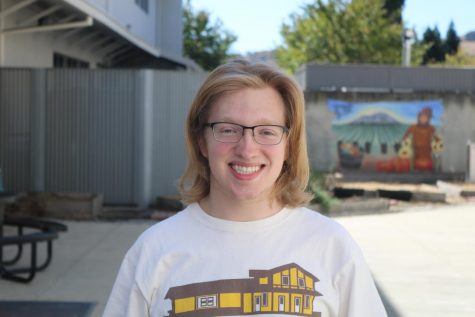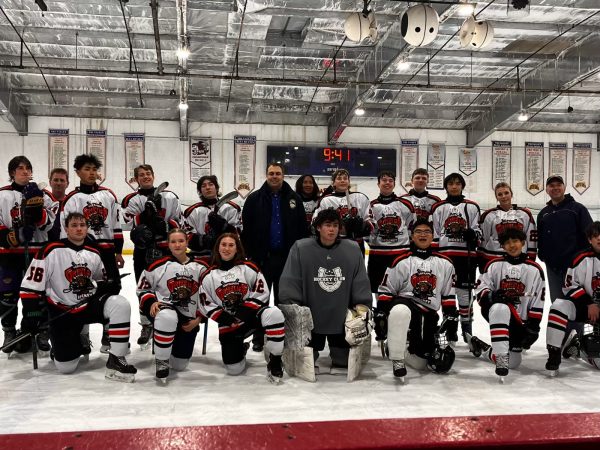Bay Area residents speak out against environmental racism, police brutality at Chevron world headquarters
2017 Dougherty Valley grad Sameera Rajwade organizes the protest
Bay Area residents marched to protest environmental racism at Chevron’s world headquarters in San Ramon on July 11.
A flyer distributed by protesters defines environmental racism as “the disproportionate impact of environmental hazards in communities of color”.
The goal of the protest was to make area residents aware of Chevron’s activities, including alleged dumping of oil into the Ecuadorian Amazon by Texaco, a Chevron-owned company, and oil refining in Richmond.
Sameera Rajwade, a San Ramon resident and Dougherty Valley Class of 2017 alumna, organized the protest because she finds it hypocritical that Chevron is headquartered in San Ramon, a largely upper-middle-class suburb, while it operates a refinery in Richmond, a community the US Census indicates has 15 percent of its population living in poverty.
“Here [in San Ramon], it’s a very healthy community, yet the headquarters are here,” Rajwade said. “There is definitely a discrepancy between how our governments and corporations favor the rich rather than the poor, and they’ll let the poor take the brunt of health crises and environmental damage.”
Chevron did not respond to an email inquiring about Rajwade’s claim about detrimental effects from the Richmond refinery.
Around 12:30 p.m., approximately 25 protesters marched from their gathering place at Iron Horse Middle School to the City Center and San Ramon Farmers Market.
Concerns over environmental racism also intertwined with general concerns about racism and police brutality.
Chants of “no justice, no peace, no racist police”, “say his name, George Floyd”, and “say her name, Breonna Taylor” were heard from protesters while they marched, echoing recent Black Lives Matter protests across the country.
The demonstrators gathered in the middle of the City Center, where Rajwade gave a speech outlining her platform for San Ramon’s District 3 City Council campaign in November.
The issues Rajwade spoke about overlapped with the reasons for the protest: environmental concerns and racism.
“My plan is to use the one million increase in our budget [allotted for the police department] and reinvest it into communities that need it,” Rajwade said in the speech.
City funding for the police department increased by $1.3 million compared to the 2019-20 budget, according to the San Ramon 2020-21 budget,
From the City Center, demonstrators marched across the street, up to the gate on Chevron Drive, where Rajwade then gave a speech criticizing the oil company.
“We are here today to talk about the fact that Chevron is responsible for the respiratory and cardiovascular diseases of many children and residents in Vallejo, in Richmond, California,” Rajwade said. “They think they can get away with these crimes, these environmental acts of racism, because they’re a big corporation who starts wars overseas, in the Middle East, and does not give a hoot about people’s lives”.
It is unknown why Rajwade mentioned Vallejo. Unlike Richmond, Vallejo does not have a Chevron refinery.
Critics of large oil companies have historically accused them of cooperating with the U.S. government in the prelude to the Iraq War.
Former Cal High band teacher Michael Samson then spoke to protesters about his views on the legacy of slavery.
“By taking the fight to corporations, like Chevron, by taking the fight to the police, by making the fight in solidarity with Black and indigenous lives, we can finally grapple with the bloody legacy of our original sin, slavery,” Samson said.
Lafayette resident Marcello Severo then spoke about a variety of topics, including how progressive groups should organize, economic inequality, and government corruption.
“The current bailout of banks and corporations amounts to several trillions of dollars, while only a subset of ordinary citizens have received a one-time payment of $1,200,” Severo said, referencing the CARES Act, a $2 trillion COVID-19 relief bill.
NPR reports that approximately $500 billion was provided to large companies, in the form of loans and other methods.
The protest ended at 1:20 p.m. outside Chevron headquarters, though some of the protesters marched back to and around the City Center for a few minutes afterwards.
Chevron’s oil refinery in Richmond was a key issue for the protest.
“We see that the rates of asthma and respiratory disease among children and adults in areas with refineries are much higher because of the pollution being set off,” Rajwade said.
Although the causes of asthma are not known for certain, they are likely a combination of environmental and genetic factors, which would include particles from oil refining, according to the Mayo Clinic. Rates of asthma among Richmond adults are relatively similar to adult rates nationwide and statewide, but higher rates of asthma are observed among life-long residents compared to newcomers.
About 45 percent of Richmond’s life-long residents have asthma, compared to only 6 percent of residents who have lived in Richmond for less than five years, according to a Communities for a Better Environment report. A Richmond health report published by Contra Costa Health Services indicates Richmond residents are more likely to be hospitalized for asthma than the broader Contra Costa population.

Senior Nicholas Harvey is the Editor-in-Chief for The Californian. Writing for the paper since freshman year, Nicholas is especially interested in the...









